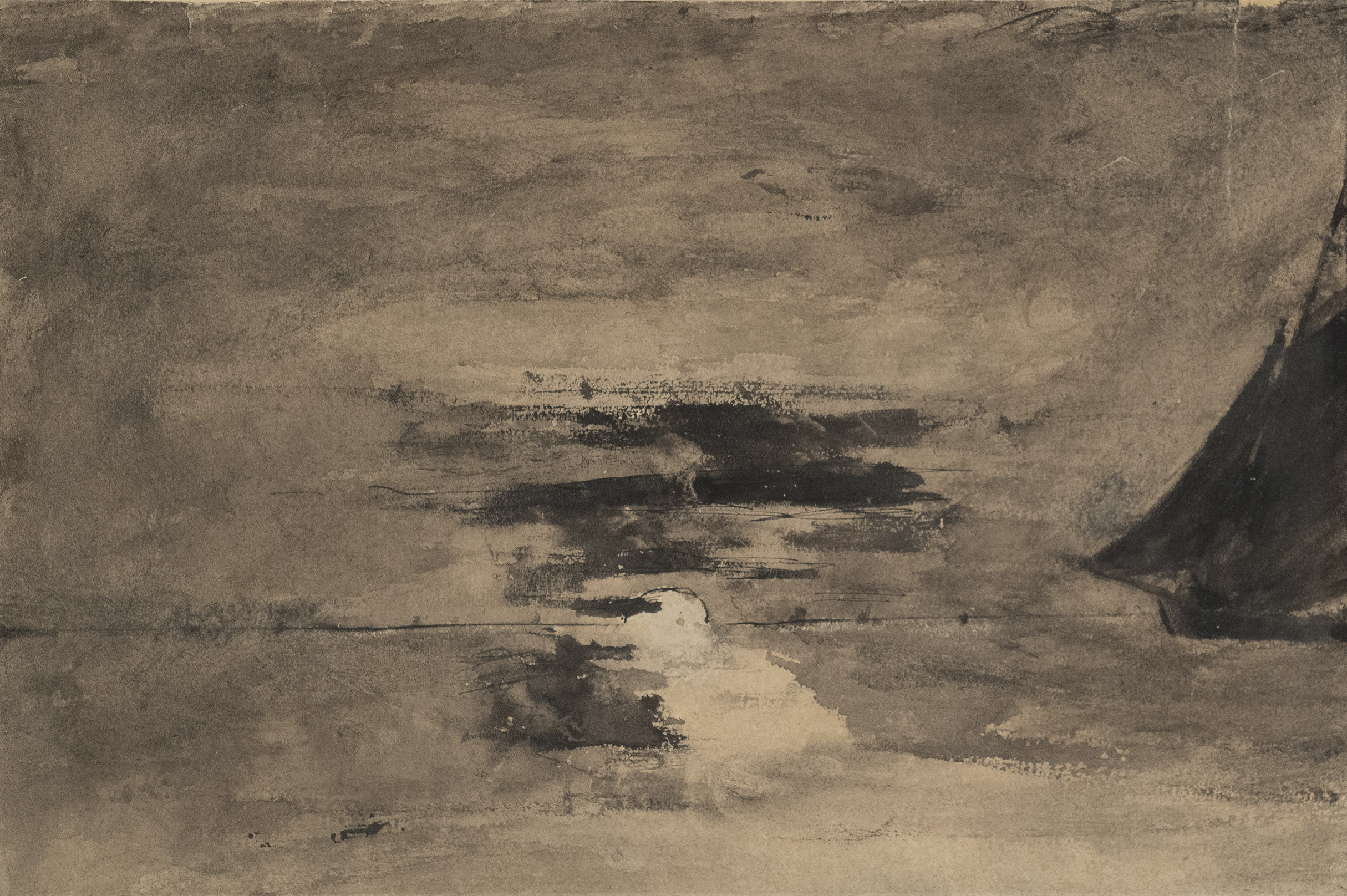Ribot often spent time in Normandy and on the Breton coast, where he painted portraits of fishermen and produced a small body of seascapes. Although peripheral within his œuvre, the theme of the sea holds a significant place in Ribot’s production: he illustrated a 1866 edition of Victor Hugo’s Les Travailleurs de la mer and, in 1878, wrote a short story entitled La Marie-Henry. Hot. 25, recounting the survival of fishermen after a storm in the English Channel.
Our Sailboat at Dusk, executed in ink and wash, reflects Ribot’s fascination with the dialogue between people and the sea. With spontaneous yet controlled brushstrokes, he depicts sailing boats off Trouville, Normandy, at dusk. The fishing vessels themselves stand in for human figures, their quiet confrontation with the elements lending the scene a poetic resonance. The fluid wash spread across the low horizon, varied in tone and density, recalls Victor Hugo’s graphic experiments on paper.
The tilted hulls and taut sails suggest unsettled waters. Yet Ribot’s composition does not recall Courbet’s dramatic seascapes, but rather his more contemplative views, and above all Boudin’s evocations of coastal light, where serenity and transience prevail over spectacle. In this sensitivity to mood and shifting light, Ribot anticipates the Impressionists. His Trouville scenes reveal a poetic awareness of the balance between human endeavour and natural forces.
Sailboat at Dusk once belonged to Mr Aizpiri — a devoted collector of Ribot’s works on paper — and was exhibited at the Hôtel de Ville of Colombes in 1934.
